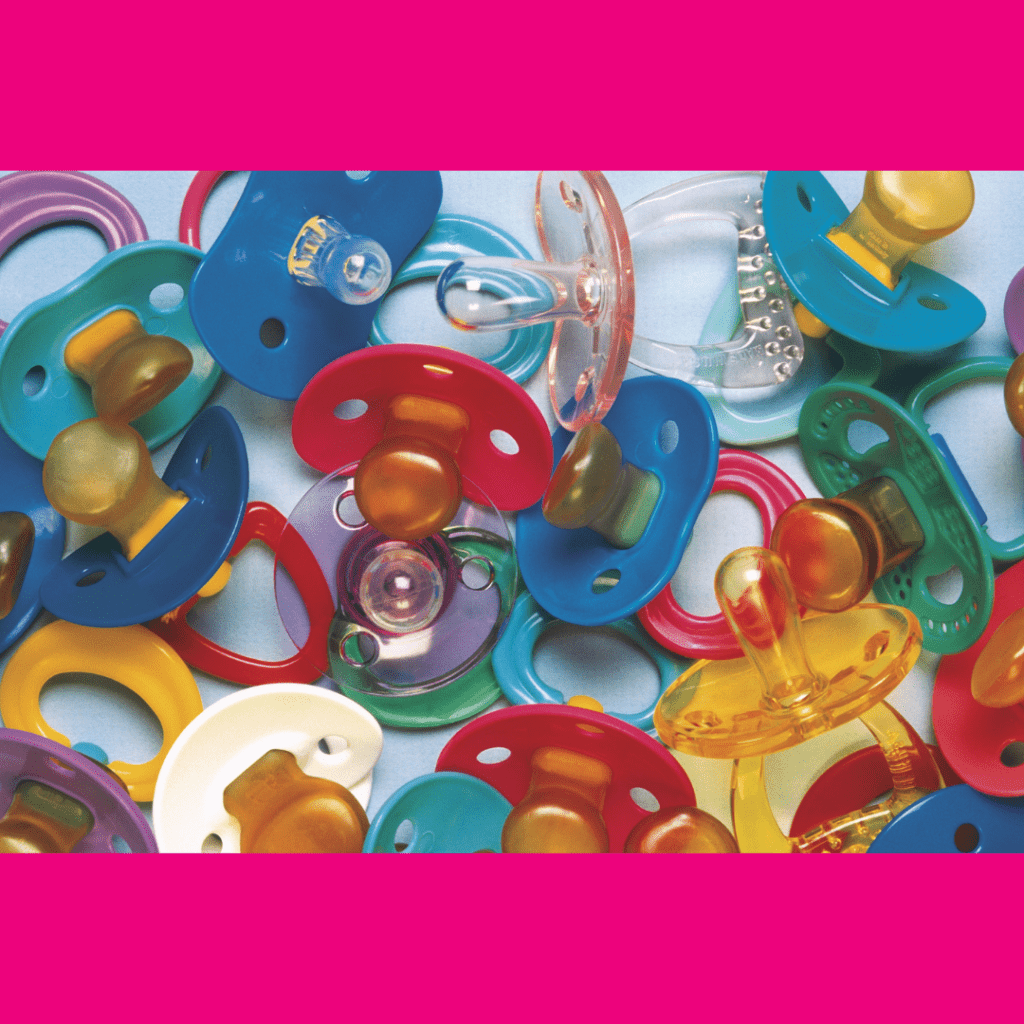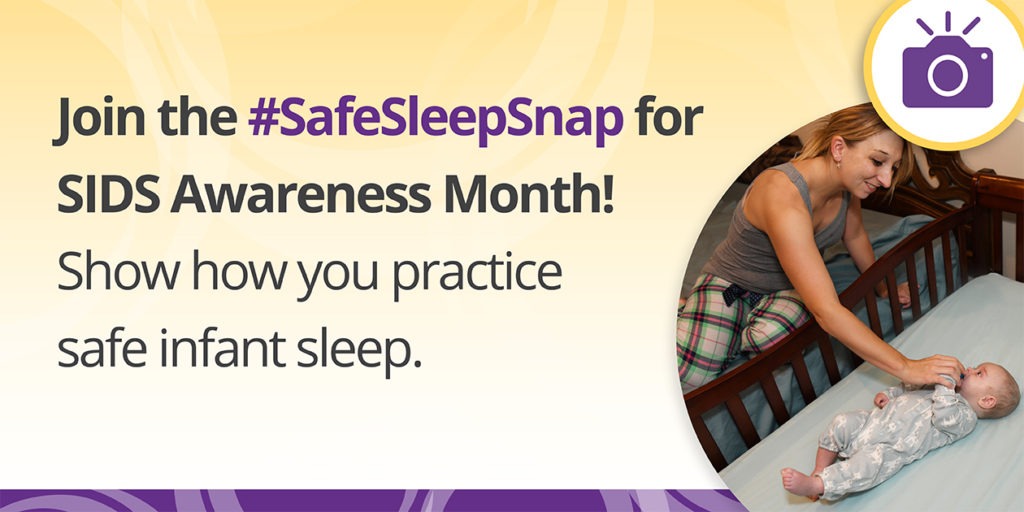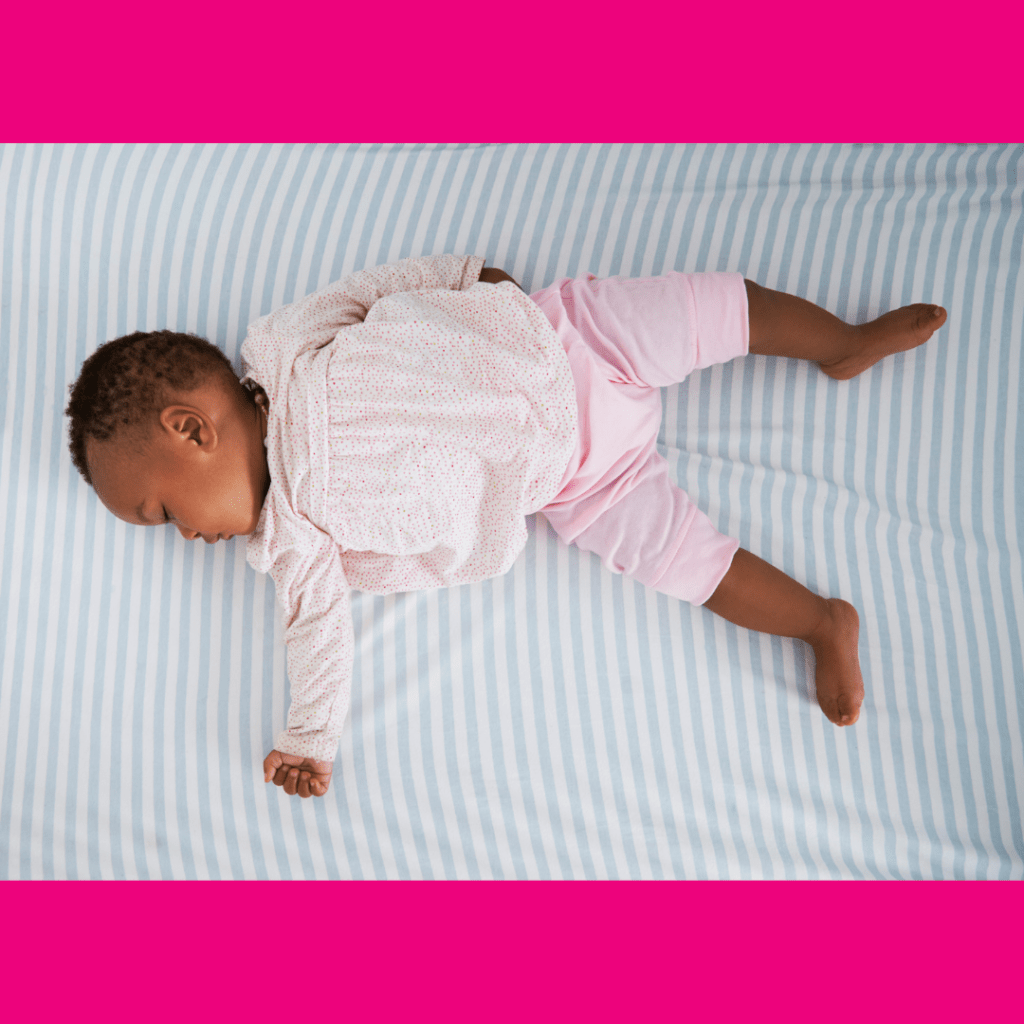October is SIDS (Sudden Infant Death Syndrome) awareness month.
SIDS stands for Sudden Infant Death Syndrome, children are at highest risk until their first year, but it is most common in babies one month to four months. There are many myths about what causes SIDS. This is not something babies can “catch,” it is not caused by cribs, vaccines, or medicine. Many parents believe that if they sleep with their baby in their bed with them, they will hear anything that could go wrong. With almost no warning signs, parents are unlikely to hear anything that can cause SIDS. Sleeping with a baby in an adult bed has many other threats that can cause infant deaths, including suffocation. Unfortunately, there are no known ways to prevent SIDS, but there are many strategies that can be used to reduce the risk. The best way to reduce this risk is to practice safe sleep.
Ways to Reduce the Risk for SIDS:
Safe Sleep: A, B, C, D
- Alone: Babies should sleep alone and not in an adult bed. Most healthcare providers encourage parents to share a room with a new baby for at least the first 6 months and up to one year but have a separate sleep area for the child.
- Back: Always place a baby on his or her back when putting them to sleep for the night or a nap. Babies should sleep on their backs until they are 1 years old to reduce the risk for SIDS or other sleep related deaths. If a baby rolls over on their own, no need to reposition, but it is critical that a baby is put to sleep on his or her back.
- Some parents are concerned a baby will choke while sleeping on their backs, but babies have an instinct to swallow or cough up any fluids. Studies show babies might clear fluids better when sleeping on their backs.
- Crib: Use a safety approved crib with a tight sheet and no loose toys or blankets. Never place baby to sleep on soft surfaces, such as on a couch, sofa, waterbed, pillow, quilt, sheepskin, or blanket. These surfaces can be very dangerous for babies. Do not use a car seat, stroller, swing, infant carrier, infant sling or similar products as baby’s regular sleep area. Following these recommendations reduces the risk of SIDS and death or injury from suffocation, entrapment, and strangulation.
- Find out if your crib follows safety standards by contacting Consumer Product Safety Commission (CPSC) is recommended. For information on crib safety, contact the CPSC at 1-800-638-2772 or http://www.cpsc.gov.
- Don’t Smoke: Do not smoke when you are pregnant and do not smoke or allow smoking around your baby.
Breastfeeding
- Breastfeeding has many health benefits for mother and baby. Babies who breastfeed, or are fed breastmilk, are at lower risk for SIDS than are babies who were never fed breastmilk. Longer duration of exclusive breastfeeding leads to lower risk.
- If you bring baby into your bed for feeding, put him or her back in a separate sleep area when finished. If you fall asleep, move them as soon as you wake up. Evidence shows that the longer a parent and an infant bed share, the higher the risk for sleep-related causes of infant death, such as suffocation.
- Breastfeeding information is available here: http://www.cdc.gov/breastfeeding/faq/index.htm.
Healthcare
- Women should get regular prenatal care while pregnant.
- After the baby is born, follow your healthcare providers guidelines when it comes to vaccines. Research shows vaccinated babies are at lower risk for SIDS.
Pacifier
- Think about offering a pacifier to your child during naps and nighttime sleep.
- Offer the pacifier to breastfed babies around 3 or 4 weeks. If you are not breastfeeding, offer whenever you want but do not force it.
- If you use a pacifier, do not attach anything to it like a string or stuffed animal
- If the pacifier falls out during sleep, don’t worry about putting it back in.
- The risk of SIDS is reduced when children use a pacifier, even breastfed children.

Tummy Time
Supervised tummy time helps strengthen your baby’s neck, shoulder, and arm muscles. It helps prevent flat spots on the back of your baby’s head. Learn more about tummy time here and stay tuned for a coming blog post dedicated to tummy time!

- Avoid products that go against safe sleep recommendations. Be especially cautious of those products that claim to prevent or reduce the risk for SIDS. There is no known way to prevent SIDS.
- Avoid drinking alcohol or using Marijuana while pregnant and after baby is born.
This month we invite you to participate in the #SafeSleepSnap activities. Take a cute and creative picture of your child in their safe sleep position and post it to help show your friends and family what safe sleep looks like.



